Agri-food waste valorization as sustainable strategy for reducing the Food Loss and Waste impact
By Patrizia Perego
Department of Civil, Chemical and Environmental Engineering (DICCA), University of Genoa, Via Opera Pia 15, 16145 Genova (GE), Italy, *p.perego@unige.it
Member of the External Expert Advisory Board of WASTELESS project.
According to the FAO, the annual food production is approximately 4.8 billion tons, of which 1/3 is lost or wasted. Consequently, huge amounts of food and agri-food waste are daily produced worldwide, posing a problem for agriculture, food supply-chains and human well-being. The impact of food losses and waste is above all ethical, but also financial and environmental, considering that it involves a waste of resources, as water, land and energy, leading to an increase of greenhouse gases. For all these reasons, its reduction is one of the main objectives set by the Green Deal and the 2030 Agenda.
However, these wastes represent an inestimable source of high added-value compounds, i.e., antioxidants, whose recovery could contribute to the achievement of these objectives with a circular economy approach. Nowadays, one of the main interesting and sustainable strategy investigated is the recovery of antioxidants from several kind of vegetables biomasses using different green extraction technologies. The green extracts can find application in several fields, such as for functional and fortified foods formulation to contribute to the survival and correct development of malnourished children and to counteract human diseases. Furthermore, they can be applied for active food packaging and drug delivery systems, in biomedicine for functionalized scaffolds and in agriculture for biostimulants production. In this way, wastes that are still difficult to manage can be revalued, obtaining compounds with a high beneficial action and the residual biomasses, free of compounds with high-added value, can be destined to the production of bioenergy.

